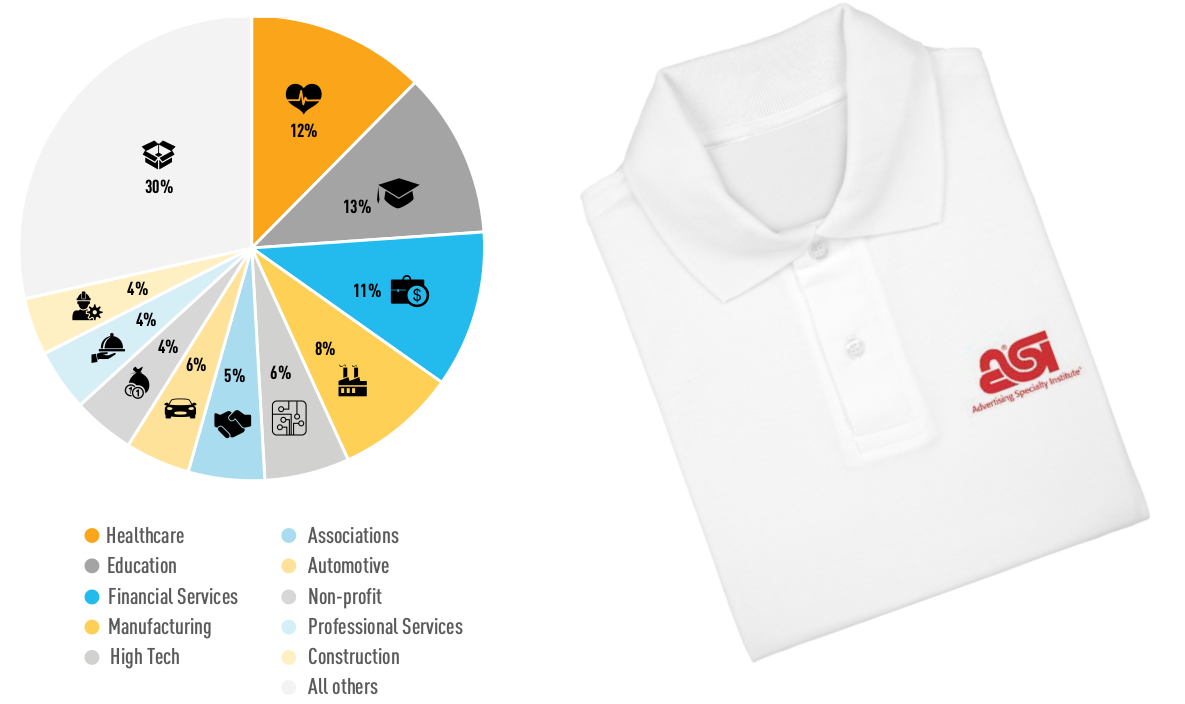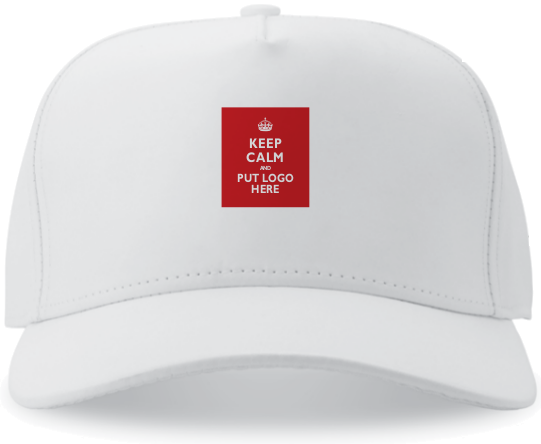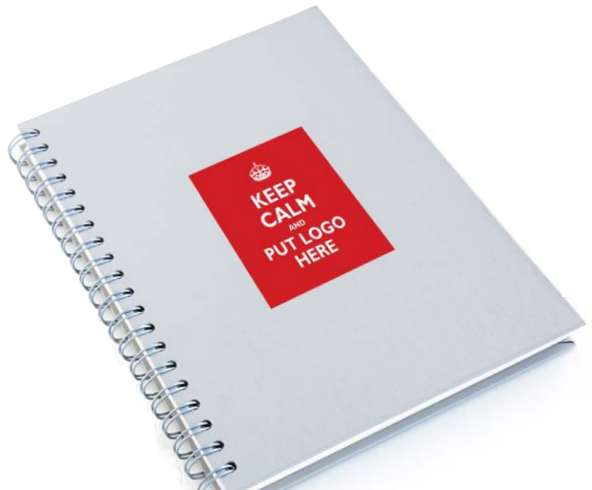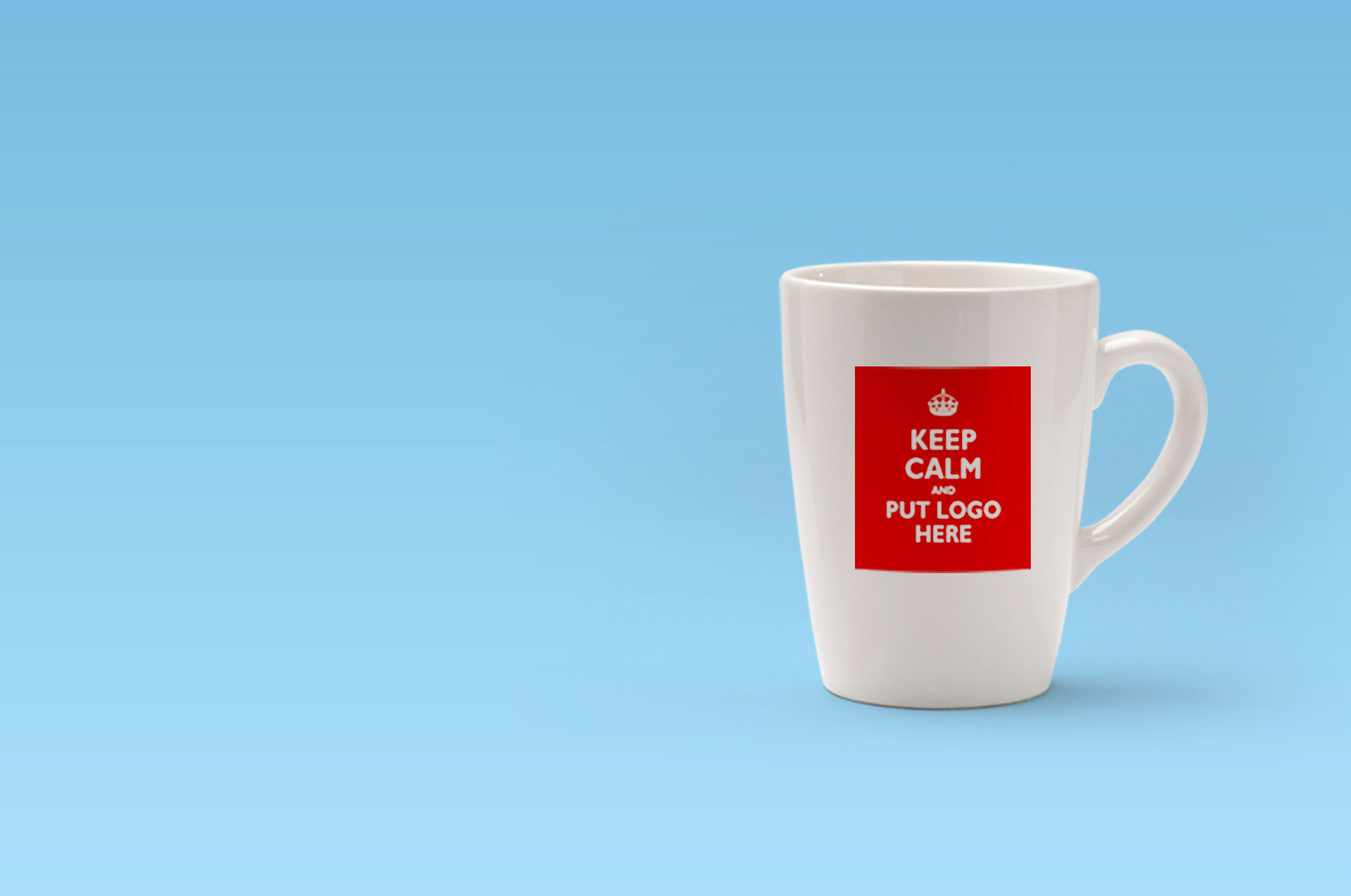Branded merchandise – also known as “tchotchkes” – is an area of marketing that can afford significant savings and efficiency opportunities for enterprise procurement teams, if only it could get the attention it deserves. For companies that spend hundreds of millions of dollars on media and agency fees, branded merchandise frequently takes a back seat to the sexier, more high-profile media and creative categories. This is true for both marketing campaign management and supplier management. Because many of these items are low in cost and are not considered impactful to the brand, they tend be ignored by senior marketing and procurement executives alike. This is an oversight that, if addressed correctly, can lead to double-digit percentage savings figures – while providing more control over your brand.
At first blush, the promotional merchandise category appears to be simple one: How complicated can sourcing tchotchkes be? The quintessential tchotchke giveaway is a coffee mug or a pen branded with the company logo. Wearables, such as t-shirts, sweatshirts, caps, and golf shirts, are also very common. Simple, right? Not so fast. Add in custom promotional products, high-end items, seasonal products that are popular around the holidays, food, and flowers, and the category quickly becomes more complicated. Add to that several common areas of hidden upcharges by suppliers and optimizing the category becomes even more complex – unless you know what to look for.
In this paper, GEP provides a high-level overview of the branded merchandise category, its unique dynamics, and recommendations to optimize your spend and get the most value from your branded merchandise suppliers.
Overview
The promotional products supply-side market comprises manufacturers, distributors and brokers of the product. This category is governed by the Advertising Specialty Institute (ASI). Founded in 1950, the membership includes 25,000 distributor and supplier firms of promotional products. In 2013, sales of ad specialties were $20.5 billion, up 5.3 percent from 2012 1. And while there is a traditional perception that tchotchkes don’t have a significant impact on the brand, the reality is that items like mugs, pens, and t-shirts are memorable and provide a better cost per impression for advertisers than almost every major marketing effort, including prime time television, magazines and radio.
While promotional products are not as widely used by corporations as other marketing channels, such as advertising, direct mail, or commercial print, there are client sectors that have significant spend, with the top 10 listed below (2013 data 2 ):

Surprisingly, consumer products companies only make up 3.4 percent of total distributor revenues.
Promotional products can have several subcategories that require different sourcing and management strategies:
- Catalog Items: These are items that are frequently purchased and are available off the shelf from stocked inventory or are easily sourced with quick turnaround times.
- Custom Products: These are items that are made for specific events or promotions. The custom development process is identical to the creative development process for all other marketing categories, with the client providing a creative brief, the creative team providing several concepts from which to choose and then completing the creative development process.
- Food & Flowers: This subcategory includes all food gift items, such as Harry & David gift baskets or Omaha steaks.
- Seasonal Gifts: These items are usually developed around the holiday season and are common for brands that have large sales teams that like to give gifts to their customers.
1 Advertising Specialty Institute
2 Advertising Specialty Institute – State of the Industry 2014
Supply-Side Dynamics
There is a very low barrier to entry to become a distributor of promotional products; because the distributor does not actually manufacture any products, all one really needs to start distributing promotional items is a laptop and phone, et voila! Because of this low barrier to entry, there are, not surprisingly, there are more than 32,000 suppliers that serve in a distributor model.
Many marketing stakeholders assume their manufacturer and distributor are one and the same, but this is generally not the case. The distributor is fundamentally a broker of promotional items who works with a domestic and international manufacturing base, and then marks up the items sold to client-side advertisers.
Until recently, the promotional products category was composed of mostly small, locally-based distributors, which accounts for why many corporations can have over 100 promotional products suppliers. Fortune 500 and Global 2,000 enterprises often have over 1,000 suppliers. A distributed supply base of so many branded merchandise distributors presents various risks to advertisers, including:
- Lack of control over adherence to brand standards
- Lack of transparency and control over what is being purchased by employees (i.e. how impactful are bobbleheads to the brand?) and the amount of items that are being purchased (ordering 5,000 pens could be a waste of dollars without an active distribution plan, since the ink could dry up before all the pens are distributed)
- Increased product quality assurance risk from foreign manufacturers due to lack of quality certification processes or ethical labor practices (i.e. fashion tchotchkes made in a low-cost country may contain harmful metals or dyes)
- Lack of transparency in pricing
The commercial model for branded merchandise distributors is a straight cost-plus margin model, with additional charges that span from Pantone Matching System (PMS) costs to plate charges to marked-up freight. More often than not, the manufacturer does not charge the distributor for these additional items; they are simply areas of profit for the broker.
In 2013, the average gross margin of ad specialty distributors was 32.9 percent with the net profit margin as high as 10 to 12 percent. When comparing that to profit margins of 12 to15 percent for ad agencies, especially given the strategic and creative requirements that an agency has to develop to deliver effective and compelling advertising, it’s prudent to consider what value is being delivered that justifies such high margins for branded merchandise distributors.
New competitors in the market include ad agencies and marketing companies that are diversifying their product offering to become a one-stop shop, as well as websites selling promotional products. There’s even a distributor whose model is to connect clients directly to manufacturers though a centralized technology portal. All of these new competitors with unique solutions do put pressure on margins, which is beneficial for corporations trying to cut costs.
Advertisers should leverage larger suppliers to help them optimize their promotional items category. As always, knowledge is power, and understanding the branded merchandise market gives you leverage to reduce your promotional products margin while increasing the number of services that are included in the buy price, thus decreasing your overall costs.
Unique Dynamics of the Promotional Products Category
How is it that promotional products distributors demand a 12 percent profit margin on tchotchkes while strategic and creative advertising agencies only get 15 percent, at best? Two primary dynamics have created this situation:
1) Misperception of Value: Distributors have borrowed successful concepts from consumer marketing to create a perception of added value with the services they provide, when, in fact – similar to consumer products – it is a commoditized category, both in terms of what is being sold and the distributor model itself. A distributor can add some value, but the value-add falls specifically into three buckets:
- Product Innovation: They should be actively engaged in the branded merchandise industry and be able to provide cutting-edge, innovative product ideas relevant to an advertiser’s specific target markets
- Creative Development: They should have an in-house creative team or creative partners that mirror an agency in both creative ability and strategic thinking for development of custom items
- Strategic Thinking: In the event you need a partner to help consolidate your supply base, this supplier should have experience in consolidation and be able to provide you with a strategy to help consolidate your supply base into their model
2) Relationships: Because promotional suppliers have done a good job of creating a perception of added value in an otherwise commoditized market, many times brands are under the impression that their specific branded merchandise supplier is the only supplier that can provide the type of service the stakeholder is looking for. As a result, even though most of what is being purchased is a commodity, marketing stakeholders are just as attached to their suppliers as they are to their creative agencies. What many companies don’t realize is that suppliers are largely fungible, as there is a surplus of advertising specialty distributors that have access to the same domestic and international manufacturers and can source any items available in the market.
Procurement and marketing executives should be looking at other differentiators to help them select the right supplier for their business. We’ll review those categories in greater detail ahead.
Optimization Strategies
There are several strategies available to optimize this category — from a strategic sourcing as well as a demand-side management perspective. Once you’ve secured your primary supplier, you can implement more control over purchases, managing costs, as well as appropriate control over the correct use of your brand through new business rules associated with the ordering and purchasing process.

How is it that promotional products distributors demand a 12 percent profit margin on tchotchkes while strategic and creative advertising agencies only get 15 percent, at best?
Strategic Sourcing
Consolidate Supply Base
There is a direct correlation between the number of suppliers you currently have in your promotional category and how many you end up with. The more suppliers you have, the more difficult it is to reduce down to a few. Some large national or global firms with multiple brands may have as many as 800 suppliers. Reducing that number down to 50 suppliers would certainly be considered a success. There is no magic number you should be trying to reach, however, given the nature of the commoditized market, reducing down to one (or a few primary suppliers) with a handful of specialty, niche suppliers should be sufficient to fulfill your company’s needs. Since all ASI distributors have access to the same manufacturers, and can source the exact same items as the next branded merchandise supplier, it is difficult to come up with compelling reasons to have more than one primary supplier. As mentioned previously, there are only a few distinct areas of additional value that distributors can offer, which are essentially based on their creative and innovation capabilities. Your primary supplier should have the following capabilities with the commercial model listed below.
1. Centralized eStore/Robust Technology Platform
Along the same lines as consolidating your supply base into one primary supplier, your branded merchandise partner should have a user-friendly centralized eStore and technology platform that offers users an Amazon-like shopping experience, including customer reviews and product ratings, inventory information and shipping tracking, and unlimited business rules that can be customized according to each brand’s requirements, including purchase-level approvals and creative asset availability.
2. Transparent Pricing Model
The supplier you chose should be completely transparent with pricing and agree to a cost + margin commercial model with auditing rights at any time. As mentioned above, the average gross margin for ASI distributors in 2013 was 32.9 percent – many suppliers enjoy mark-ups as high as 45 percent. Large distributors with consolidated buying power should be able to provide a 20 to 28 percent gross margin on catalog items, depending on the size of your branded merchandise programs. This price should include everything, except shipping and taxes, enabling you to exclude all additional mark-up charges:
- Set-ups
- PMS matches
- Additional colors
- Handling
- Plate charges
- Marked-up freight
- Prepaid inventory
- Ordering
- Technology platform
Your suppliers should list their buy price, sell price, and margin charged. If they cannot or will not agree to that, then it’s better to find another supplier.
3. Service Model, Including Creative Team
This is where the value add comes in to play – the account and creative services teams. Your account team should be in touch with the latest trends in the promotional products industry and should be able to provide innovative ideas. There should be a creative and ideation team (in-house or through partners) assigned to your account that is familiar with all your brands and can provide impactful and relevant creative concepts for your custom promotional products.
Since all ASI distributors have access to the same manufacturers, and can source the exact same items as the next branded merchandise supplier, it is difficult to come up with compelling reasons to have more than one primary supplier.
4. Reporting
Your supplier should provide online reporting, on a frequency of your choice, through a technology platform that shows metrics on the categories listed below. The list provided ahead is by no means exhaustive, but is intended to provide a sampling of the information you should receive.
- Sales data:
- Item number
- Quantity
- Supplier buy price
- Supplier sell price
- Supplier margin
- Inventory Status – By SKU # and Item Description:
- Quantity on hand
- Quantity on backorder
- Quantity currently on order, reorder point
- Two-year sales history for each item
- Ship-to-Sales – Overview of Orders, Including:
- Order numbers
- Items ordered
- Ship to address
- Shipping Status
- Order confirmation
- Shipping status, including estimated time of arrival
- Delivery confirmation
- Customer Service/Call Handling Data
- Calls initiated
- Calls dropped
- Length of calls
- Issue report
- Resolution report
5. Warehousing and Fulfillment:
The distributor you choose should have its own network of warehouses (or a proven partner such as Iron Mountain) that can provide fulfillment and kitting for your promotional product orders.
Demand Management
Once you have a consolidated supply base with a centralized user-friendly eStore and technology platform, you will be able to set business rules — by business unit or brand — that can help you control what and how much is ordered and purchased.
It may sound too good to be true, but it’s eminently achievable. Compare this model to the travel category and think about how much control is gained once a centralized travel portal is implemented, which has business rules about which airlines, hotels, and rental cars could be used. It really is that simple. Of course, the process of getting there is what can be challenging.

You will be able to set business rules — by business unit or brand — that can help you control what and how much is ordered and purchased. It may sound too good to be true, but it’s eminently achievable.
Beyond Sourcing
It wouldn’t be realistic to suggest that consolidating a large, distributed supply base into one or a few suppliers is as simple as conducting a sourcing exercise. Once the supplier is chosen, you are now faced with the internal change management task of getting stakeholders – who, very likely, have long, deep relationships with their promotional products suppliers – to change to a new model. Remember, even though these suppliers are providing commoditized tchotchkes, marketing stakeholders value these relationships just as they value their creative agencies. Therefore, you will have to address this category in the same manner you would an agency consolidation, with participation and support from your marketing stakeholders. This will ensure that you are adequately capturing their business requirements as well as ensuring that they have something invested in the outcome of such an optimization effort.
Looking at Promotional Products through a New Lens
As you can see, the branded merchandise category, while appearing to be straightforward, can be complex.
- The low barrier to entry in becoming a promotional items supplier has created a saturated supply base of tens of thousands of distributors that have successfully created a perception of added value with the services they provide. This creates a dynamic where marketing stakeholders are under the impression that there are only a few branded merchandise suppliers that can fulfill their business requirements, thus deepening their supplier relationships.
- There are many areas of hidden costs that distributors incorporate into the pricing model. Consolidating suppliers into one larger primary supplier will allow you the opportunity to leverage your spend to negotiate a straight cost+margin model with transparency in pricing,
- When consolidating your branded merchandise supply base, the value-added differentiators you should be seeking in your primary supplier are
- Product Innovation
- Creative Prowess
- Strategic Thinking
Once you understand the dynamics of the category, and are able to ask the right questions of suppliers, you will be in a better position to streamline what should really be a straightforward buying process.
They are, after all, just tchotckes.

